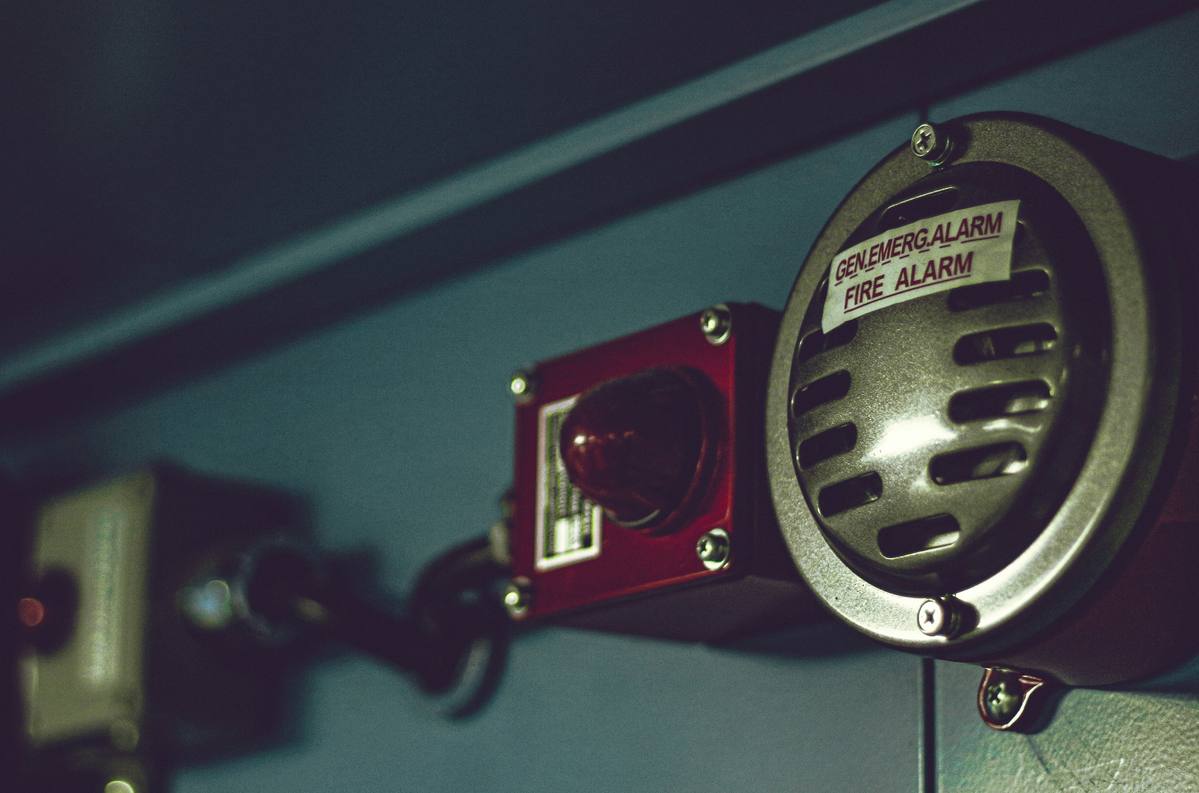Embarking on the Journey of Starting an Emergency Room Business
Diving into the healthcare sector by opening an Emergency Room (ER) business can be both a profoundly rewarding and challenging endeavor. It's not merely about providing critical care; it's about creating a sanctuary of healing that stands ready at life's most uncertain moments. The journey begins with a solid foundation--acquiring the necessary licenses and ensuring compliance with healthcare regulations. Then, one must focus on assembling a team of skilled healthcare professionals who are not only adept in their medical expertise but also possess a compassionate understanding of patient needs. Location scouting follows, as accessibility plays a crucial role in emergency care. Ultimately, investing in state-of-the-art medical equipment will set the stage for offering unparalleled patient care.

The Challenge of Compliance and Regulation
When thinking about how to start an emergency room (ER) business, it's crucial to first grapple with the regulatory environment. The healthcare sector is heavily regulated to ensure patient safety and care quality. As a result, new ER businesses must navigate a labyrinth of local, state, and federal regulations before even opening their doors. This includes obtaining the necessary licenses, adhering to building codes, and ensuring compliance with healthcare laws like HIPAA. Navigating this maze can be daunting but is essential for providing safe and legal medical services.
Finding the Right Staff
Finding qualified and experienced staff is another significant hurdle. An ER requires a diverse team of professionals, from doctors and nurses specialized in emergency medicine to support staff like technicians and administrators. Recruiting individuals who are not only skilled but also share the vision of your ER can be challenging. Moreover, the competition for these professionals is fierce, especially in locations with existing healthcare facilities. Ensuring a competitive compensation package is critical to attract and retain top talent.

Financial Planning and Management
Understanding the financial aspects is vital. Starting an ER involves substantial initial investment in infrastructure, equipment, and staff hiring. Continuous operational costs such as salaries, utilities, and medical supplies add to the financial burden. Securing funding through loans or investors requires a solid business plan that demonstrates profitability potential. Moreover, managing cash flow efficiently is crucial for sustaining operations until the business becomes profitable.
The Importance of Location
Selecting the right location can make or break your emergency room business. The ideal location is accessible, visible, and situated in an area with a demographic in need of urgent care services. However, high-demand locations are often expensive and may have stringent zoning laws. Additionally, proximity to competitors can significantly impact your business's success. In-depth market research and strategic planning are necessary to identify a location that balances cost, accessibility, and market need.

Building a Strong Brand
In today's competitive healthcare landscape, establishing a strong brand is more important than ever. Your ER's brand should communicate trustworthiness, professionalism, and compassion--qualities that patients seek in urgent care providers. Developing this brand identity involves more than just a memorable logo; it encompasses everything from patient interaction protocols to interior design elements that enhance patient comfort. Effective branding differentiates your ER from competitors and fosters loyalty among your patients. Engaging marketing strategies will further reinforce your brand presence in the community.
Boost campaigns with 250+ editable templates. Save, reuse, and wield design tools for business growth.
Try it for FREE!Implementing Cutting-edge Technology
The integration of technology can significantly enhance operational efficiency and patient care quality in an emergency room setting. From electronic health records (EHRs) to advanced diagnostic tools, technology streamlines workflows and improves diagnostic accuracy. However, implementing these systems requires significant investment and training to ensure staff can utilize them effectively. Furthermore, staying abreast of technological advancements is crucial for maintaining competitiveness and meeting evolving healthcare standards. A strategic approach towards technology adoption can set your ER apart in terms of efficiency and patient satisfaction.

Maintaining High Standards of Patient Care
Above all else, prioritizing patient care is paramount for the success of any emergency room business. This means not only providing immediate medical attention but also ensuring a positive overall experience for patients and their families. Establishing protocols for compassionate care while maintaining operational efficiency is challenging but essential. Regular staff training sessions on best practices in emergency care and customer service can help maintain these standards. Ultimately, the reputation of your ER will depend on the quality of care provided.
Utilizing Design Tools Like Desygner
In building your ER's brand identity and marketing materials, tools like Desygner become invaluable assets. Desygner offers an easy-to-use platform for creating professional-quality designs without needing extensive graphic design skills. Whether you're crafting brochures about your services or designing billboards for local advertising campaigns, Desygner simplifies these tasks dramatically. Its utility extends beyond simple design tasks; it aids in maintaining visual consistency across all marketing channels--a key aspect of effective branding.
## The Significance of "How to Start" for Emergency Rooms BusinessesThe inception phase of an Emergency Rooms (ER) business is a pivotal moment that sets the trajectory for its future. A well-considered start can be the linchpin to unlocking a harmonious blend of efficiency, patient satisfaction, and operational excellence. It's a time when foundational principles are laid down, where every decision acts as a building block towards constructing an establishment that doesn't just serve the community but becomes an indispensable part of it.Starting correctly ensures that the emergency room is not only equipped with state-of-the-art medical technology but also staffed by compassionate, highly skilled professionals who are ready to respond at a moment's notice. This initial stage is critical in establishing protocols that prioritize patient care above all, ensuring swift, accurate diagnoses and treatments that can literally mean the difference between life and death.Moreover, a well-planned startup phase fosters an environment where innovation flourishes. It's about creating a space that encourages continuous learning and adaptation--an ER that evolves with emerging healthcare trends and technologies while always maintaining the human touch that patients seek during their most vulnerable moments.The positive outcomes of starting up correctly are manifold. Patient trust is cultivated from day one, leading to increased satisfaction and loyalty. In an era where word of mouth and online reviews significantly influence public perception, this can set the tone for how the community views and engages with the ER. Furthermore, efficiency gains from streamlined processes not only improve patient outcomes but also enhance the work environment for staff. A team that feels supported in a well-organized setting is more likely to deliver high-quality care consistently.Financial stability is another cornerstone benefit of a thoughtful beginning. By meticulously planning and implementing cost-effective strategies without compromising on quality, an ER can achieve sustainability faster. This economic solidity allows for reinvestment into both the facility and its employees, fostering growth and innovation.In essence, "how to start" matters immensely because it's about laying down roots in fertile ground--creating a resilient foundation upon which every aspect of the ER can thrive. It's about envisioning not just the immediate needs but anticipating future challenges and opportunities. The difference a well-planned startup makes is profound, transforming an emergency room into a beacon of hope and healing for those it serves--a place where extraordinary care begins before patients even walk through the door.

Concluding Thoughts on Launching an Emergency Room Business
Starting an emergency room business is a commendable yet complex venture that requires careful planning, dedication, and a deep understanding of the healthcare industry. As we've dissected the steps, challenges, and considerations essential for this entrepreneurial journey, it's clear that success hinges on more than just medical expertise. It demands a multifaceted approach, combining business acumen with a strong commitment to providing quality healthcare.
Moreover, navigating the regulatory environment, ensuring patient safety, and managing operational costs are critical components that cannot be overlooked. Entrepreneurs must also prioritize building a skilled team capable of delivering exceptional care while fostering a culture of continuous improvement and innovation.
In addition to these foundational aspects, marketing and branding play pivotal roles in setting your emergency room apart in a competitive landscape. This is where creativity meets strategy, crafting a message that resonates with your target audience and highlights your unique value proposition.
To guide you in this process, consider these key takeaways:
- Understand your market and the needs of your community.
- Ensure compliance with all regulatory requirements.
- Develop a solid business plan with financial projections.
- Invest in high-quality medical equipment and technology.
- Hire experienced healthcare professionals.
- Focus on patient safety and quality care.
- Create a strong brand identity.
- Leverage tools like Desygner for your marketing needs.
As you embark on this ambitious endeavor, remember that preparation, perseverance, and passion are your greatest allies. And for your marketing materials, sign up at Desygner to create compelling designs that speak to your audience and elevate your brand in the healthcare sector.


